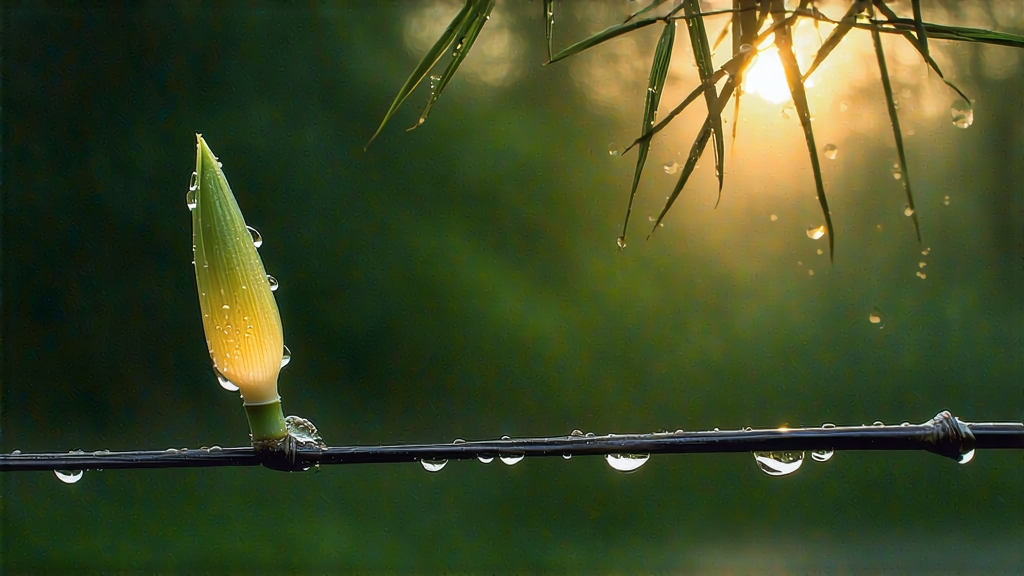
Among the six great families of Chinese tea, white tea is the least theatrical yet the most elusive; it is oxidised only by the passage of air, time and moonlight. Within that minimalist spectrum, Bai Hao Yin Zhen—literally “White-Hair Silver Needle”—sits at the apex, picked only between the first warm breath of March and the spring equinox when the buds are still closed, still virgin, still wearing their silvery pubescence like frost on a blade of grass. To understand China’s reverence for this tea one must listen to the silence in which it is made, for Silver Needle is less a product than a patient surrender to climate, geometry and the intuition of the withering master.
History: from palace elixir to global minimalist
The first written record appears in the Song Dynasty “Da Guan Cha Lun” (1107 CE) where Emperor Huizong praises a “white downy tribute” so delicate that it must be picked at dawn by virgins with golden scissors. Whether myth or marketing, the anecdote signals an early awareness that the bud’s integrity is easily bruised. Commercial production, however, did not stabilise until the mid-19th century in Fuding and Zhenghe counties, northern Fujian, when export firms recognised that the silvery appearance captivated European apothecaries who believed white teas possessed higher “spiritual volatility.” By 1891 Silver Needle was freighted down the Min River to Fuzhou, pressed into lead-lined chests, and sailed via Hong Kong to London where it retailed at twice the price of Keemun. After the 1911 revolution the trade collapsed; the tea survived only because villagers themselves drank it to soothe whooping cough and because Buddhist monks bartered it for rice. Its modern renaissance began in 2002 when the Chinese government granted it Protected Origin Status and micro-lot auctions in Shanghai pushed top grades past USD 2,000 per kilo, a price that startled farmers who still call it simply “the downy one.”
Terroir and cultivar: why place cannot be faked
Authentic Silver Needle is born from two clonal bushes—Fuding Da Bai and Zhenghe Da Bai—big-white varieties whose buds can reach 3.5 cm and swell with amino acids during cold March nights. Fuding’s granitic soils drain quickly, forcing the roots to struggle and concentrate the sweet L-theanine that later delivers the tea’s signature “sugarcane water” note. Zhenghe, higher and more humid, gives broader buds with a lilac perfume but less sweetness; blenders marry the two to balance body and aroma. Attempts to transplant the cultivar to Yunnan or Sri Lanka fail aesthetically: the same bush produces darker, coarser down and a tannic finish, reminding us that white tea is not a colour but a dialogue between genotype and microclimate.
Plucking ritual: one bud, no leaf, no mercy
The rule is pitiless—only the unopened bud, plucked when the overnight temperature hovers between 10 °C and 15 °C so the cell sap is viscous and less prone to oxidation. Experienced pickers recognise the audible “click” of a perfect snap; a torn epidermis will blacken within hours. A kilo of finished tea needs roughly 30,000 buds, all picked before 10 a.m. while the dew still acts as a natural antioxidant film. The baskets are shallow bamboo trays lined with banana leaf to prevent compression; any bruise at this stage becomes a permanent scar that even the most artful withering cannot erase.
Withering: the choreography of water and air
Unlike green tea that kills enzymes with heat, white tea invites them to a slow waltz. The buds are laid 2 cm thick on reed trays stacked like vertical lofts in a sun-lit corridor where louvers modulate humidity. For 48–60 hours the master shuffles the trays every 45 minutes, allowing each bud to lose exactly 93 % of its moisture without ever exceeding 30 °C. The goal is paradoxical: evaporate water while retaining the hair-like down that acts as a microscopic greenhouse, sheltering enzymes that generate honey, hay and fresh almond notes. At night the trays are moved indoors under soft UV lamps that mimic moonlight; this “yin withering” suppresses grassy volatiles and coaxes a silvery lustre. The process ends when a bud snaps cleanly and the down stands erect like frost on winter wheat—any further desiccation would bake the aromatics.
Drying: a whisper of